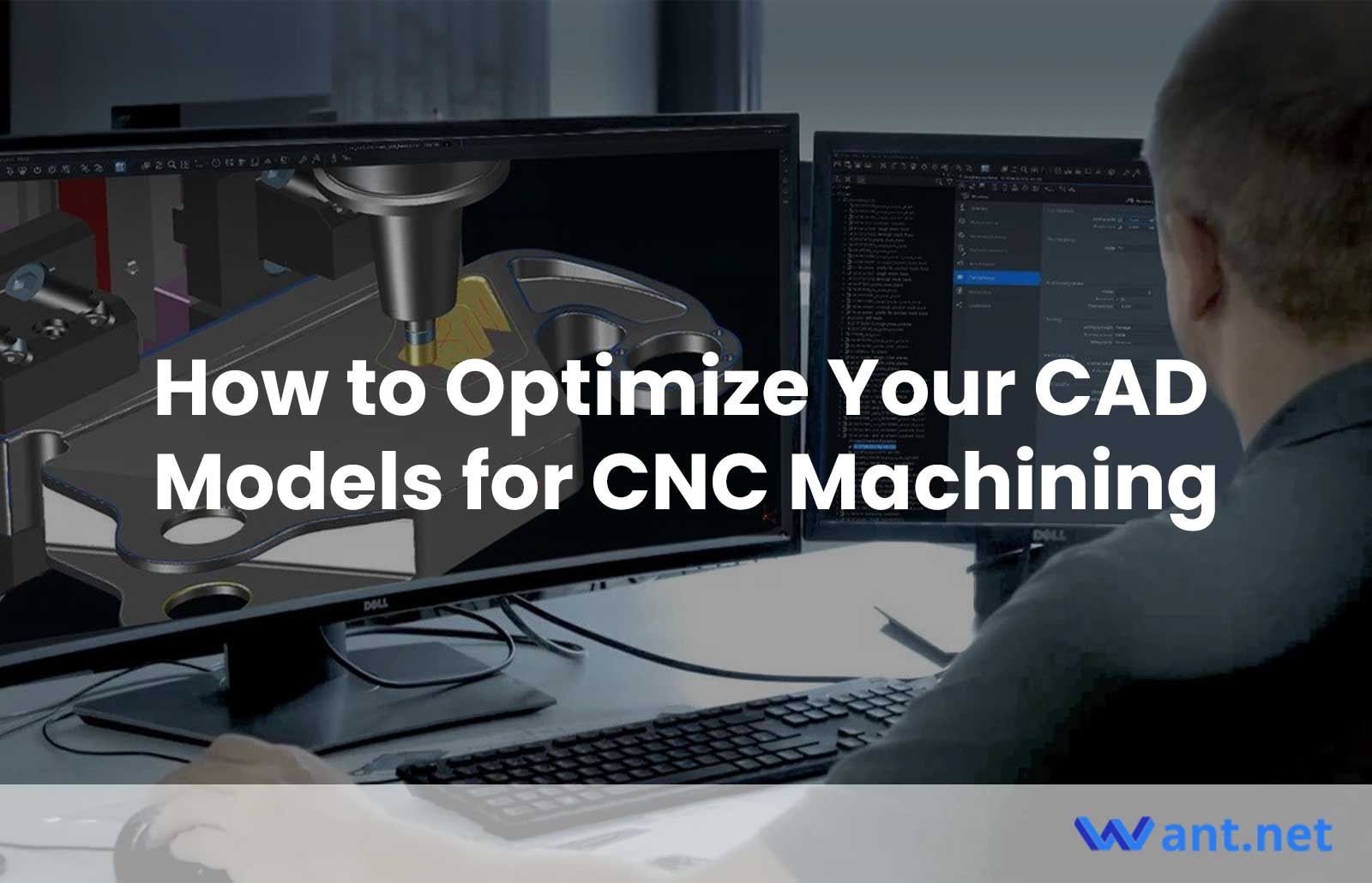In this article, we will explore the essential steps to optimize your CAD models for CNC machining. We will delve into various aspects such as geometry, tolerances, material selection, and machining considerations. By following these guidelines, you can enhance the manufacturability of your designs, minimize errors, and achieve better results during the CNC machining process. By understanding how to optimize CAD models for CNC machining, you can ensure the production of high-quality parts with efficiency and precision.
Design Considerations for CNC Machining
DFM is an inevitable concept when it comes to CNC machined parts designing. DFM stands for Design for Manufacturability. It involves considering manufacturing constraints and optimizing the design of CAD models to ensure efficient and cost-effective production. By incorporating DFM principles, you can minimize errors, reduce production costs, and enhance the overall manufacturability of your CAD models.
DFM takes into account various factors, including:
- Material factors, like machinability, hardness, etc
- Geometry and complexity
- Tolerances, you should define the appropriate tolerance during the design process
- Surface finishes
- Tool size, reach, and deflection issue during machining
CAD Model Optimization Techniques
To ensure optimal results in CNC machining, it is essential to employ effective strategies for optimizing CAD models. By implementing the following techniques, you can enhance the manufacturability and overall performance of your parts.
Simplification and feature reduction
Simplifying complex geometries and reducing the number of intricate features can significantly improve CNC machining efficiency. Eliminate unnecessary details and simplify designs without compromising functionality. By reducing the complexity of CAD models, you enhance tool accessibility, reduce machining time, and minimize the risk of errors.
Recommended Read: The Top 3 CAD Software for CNC Machinists
Fillets and chamfers
Applying fillets and chamfers to sharp edges and corners of your CAD models offers numerous benefits. These rounded features improve tool engagement and reduce stress concentrations during machining, leading to improved surface finishes and increased part durability. By incorporating fillets and chamfers, you enhance the overall quality and functionality of the machined parts.
Wall thickness and uniformity
Maintaining consistent wall thickness throughout your CAD models is crucial for CNC machining. Varying wall thicknesses can lead to uneven material removal and structural instability during machining. Opt for uniform wall thickness wherever possible, ensuring that the dimensions are within the limits of your chosen material and manufacturing capabilities.
Recommended Read: 8 Must-Know Features of CAD Software for CNC Machining
Internal features and cavities
When designing CAD models for CNC machining, consider the challenges associated with machining internal features and cavities. Ensure that internal geometries can be accessed by the cutting tools or adequately supported during machining. Incorporate appropriate draft angles to facilitate smooth part ejection from molds or fixtures.
Hole sizes and depths
Accurate hole sizes and depths are vital for successful CNC machining. Design holes with appropriate diameters and depths, taking into account the capabilities of the CNC machine and the desired fit or function of the part. Consider the tool size and the aspect ratio of the holes to avoid issues such as tool breakage, excessive material removal, or poor hole quality.
Testing and Validation
Testing and validating CAD models before proceeding with CNC machining is crucial to ensure the accuracy, functionality, and manufacturability of the final product. By conducting thorough testing and validation, designers can identify and address potential issues early in the process, saving time and resources.
Testing and validation of CAD models allow designers to:
- Verify Dimensional Accuracy
- Assess Material Compatibility
- Evaluate Structural Integrity
- Identify Manufacturing Issues
Several testing methods and techniques can be employed to validate CAD models for CNC machining. Some common approaches include:
- Physical Prototyping: Creating a physical prototype based on the CAD model allows designers to assess the fit, form, and functionality of the design. This can be done using additive manufacturing technologies, such as 3D printing, to quickly produce tangible prototypes.
- Simulation and Finite Element Analysis (FEA): Using simulation software, designers can analyze the CAD models virtually to simulate the behavior and performance of the design under different conditions. FEA helps identify potential stress points, deformation, and failure modes, allowing for optimization and improvement.
- Tolerance Analysis: Tolerance analysis involves evaluating the dimensional variations and their impact on the assembly and functionality of the final product. By conducting tolerance stack-up analysis, designers can ensure that the tolerances specified in the CAD models align with the desired product requirements.
- Fit and Function Testing: Fit and function testing involves assembling and testing the CAD model components to ensure proper fit, movement, and functionality. This can be done through physical assembly and mechanical testing, validating the design’s intended purpose.
Conclusion
The optimization process mentioned in this article will helps minimize errors, reduces material waste, and enhances the overall efficiency of the CNC machining process. Investing time and effort in CAD model optimization leads to improved product outcomes, customer satisfaction, and business success.
Other Articles You Might Enjoy
- Preparing Your CAD Model for CNC Machining
CNC machining has emerged as a go-to solution for manufacturing prototypes and parts involving cutting or drilling. This technology harnesses the power of a rotating cylindrical cutting tool to shape…
- Precision CNC Machining of Steel: High-Volume Production
Precision CNC Machining and High-Volume Production As an integral part of modern manufacturing processes, Precision Computer Numerical Control (CNC) machining brings about unmatched accuracy and consistency in the production of…
- 8 Must-Know Features of CAD Software for CNC Machining
In the world of computer-aided design (CAD) and CNC machining, CAD software plays a pivotal role in transforming design concepts into precise and intricate machine instructions. CAD software allows engineers,…









